How to Install an Artificial Grass PadelKit
Similarily to tennis artificial grass for a padel (padel tennis) court needs a good-quality and stable sub-base built especially for this occasion.
Short Description of Artificial Grass Padel Court Installation
Roll out the artificial grass as loose pieces, cut to the size, and then connect with a special tape and glue. Cut in all white-colored line-markings. Fill the artificial grass with dry, sieved round-grain quartz sand.
Step 1 – Artificial Grass Padel Court Installation
Check the Completeness of the PadelKit
As a first step check the completeness of the PadelKit materials and the compliance with the packing slip.
The PadelKit must contain:
- three (3) rolls of artificial grass
- three (3) buckets of the glue
- one (1) roll of tape
Each grass roll has a unique marking (code). Check that the codes on rolls match the packing slip.
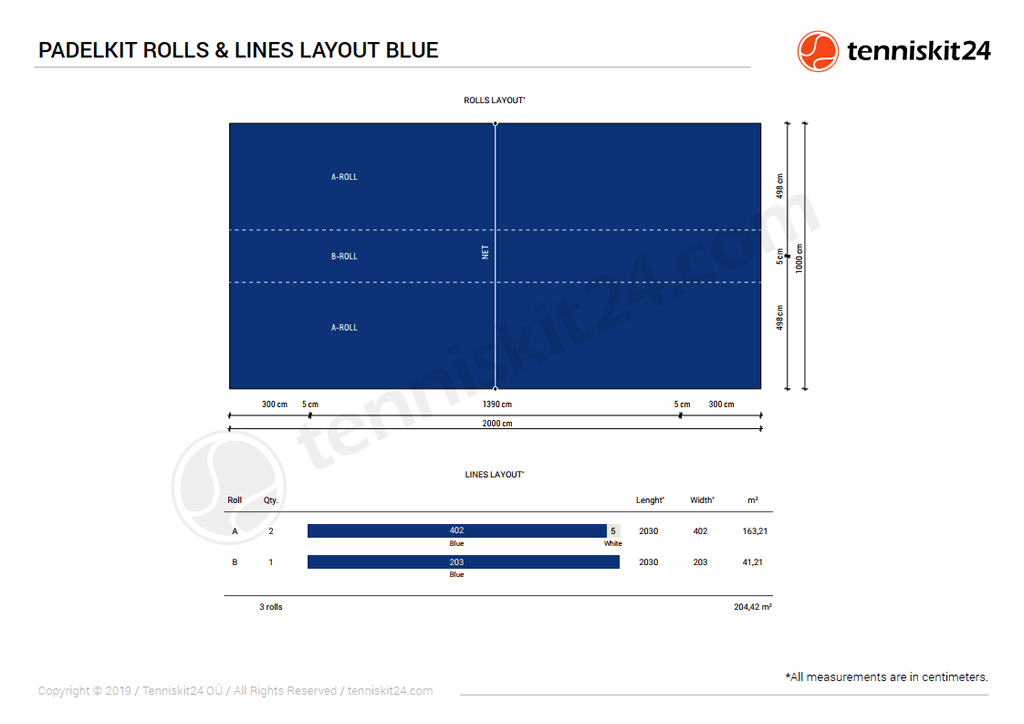
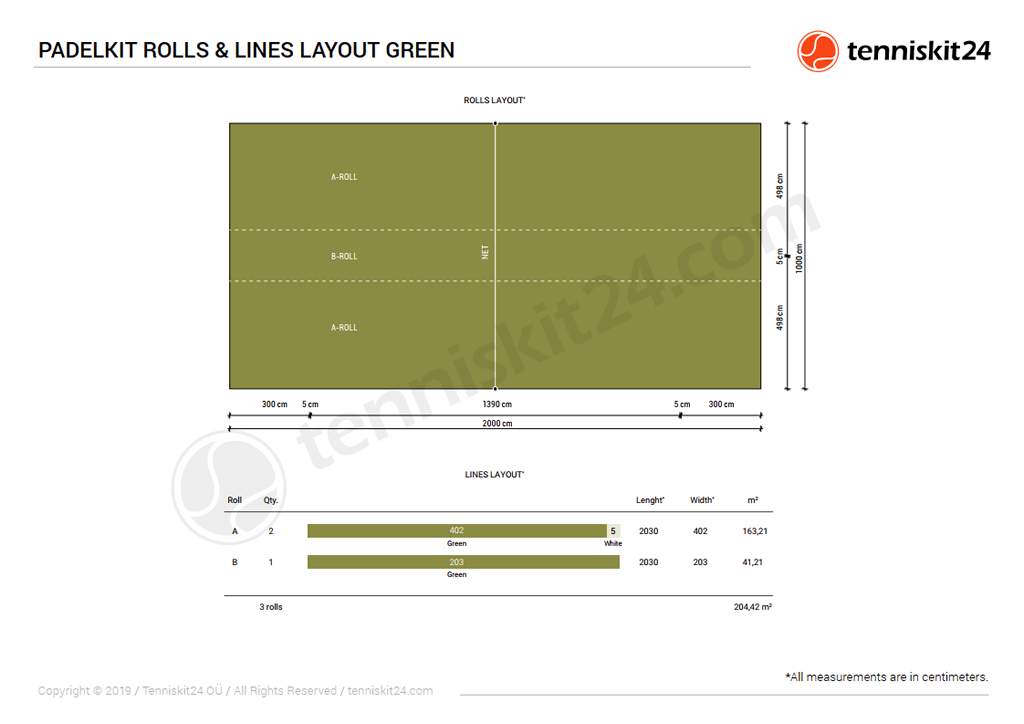
Mark the Position of the Padel Tennis Court
After checking the completeness of the PadelKit, mark the location of the court on the sub-base.
As a first step mark the axes of the court. For this, measure the lengths, widths, and diagonals across the court and mark down the centers of the sides (e.g., marks on curbstones or stakes). Make sure that the line going through the center of net posts lines up with the perpendicular axis of the court.
When the court axes are marked down, mark the contours of the playing area (length and width) on the sub-base and/or curbstone (preferably with stakes) based on court axes.
Roll Out the First Central Roll and Two Side Rolls
Roll out the first central 2m wide roll of artificial grass after marking down the court axes and contours of the playing area. Also, roll out two side rolls (4m wide each). Make sure that the rolls are rolled out in the same direction. This is important part because so you guarantee that the grass blades in the rolls remain pointing in the same direction.
Shift the Opened Rolls to the Marked Playing Area
Once the artificial grass rolls are rolled open, shift the rolls to the right places according to the marked playing area. To make this easier, we suggest connecting the stakes with string so that the strings mark the outer contours of the playing area.
Once the side rolls (4 meters wide) are in place, set the central 2 meters wide roll between with an overlap. Be careful to ensure that central roll is running parallel with side rolls so that the central roll runs precisely on the longitudinal axis of the court.
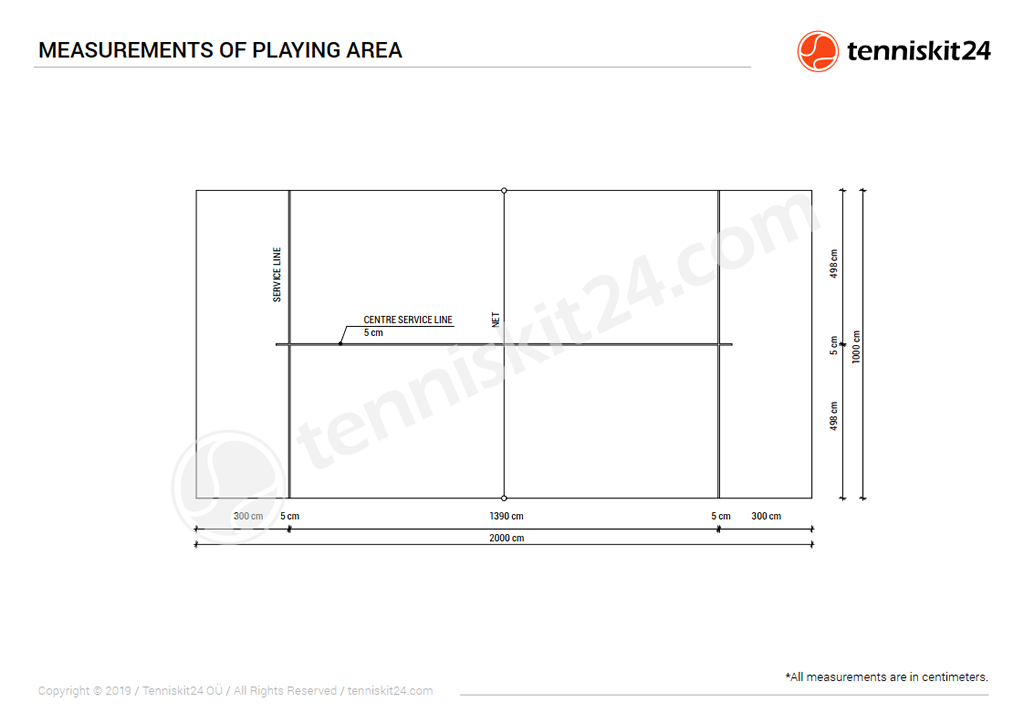
Cut Off the Technological Fabric Along the Edges
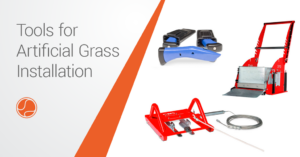
Cut off the technological fabric along the edges of side rolls.
Also, cut off the overlap of a central roll so that the seams between rolls are precise and uniform. The part cut off must not be too big. Otherwise, there is a gap between roll materials. Nor too small, or the artificial grass will wrinkle and the padel court will not look good.
Install the Lines
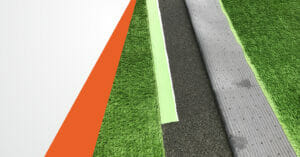
Installation of the lines is the next important step.
The material for those lines (5 cm wide) is tufted into the edges of the side rolls. So, cut off the white lines along the edges of the side rolls. These will later be used to install the service lines and center service line.
Once you have the material for lines, mark the lines for the service box on the court. We recommend using again the stakes and string, the same way as for marking the playing area).
As a next step install the service lines and center service line. For that, cut a strip 5 cm wide from the artificial grass of the playing area. Place the 5 cm wide lines you cut earlier from the edges of the side rolls into these gaps. The exact dimensions you can find on drawing.
How to Glue the Grass and Lines
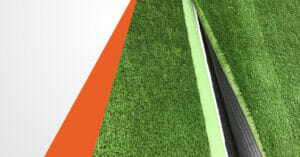
Finally, the assembled artificial grass rolls and lines of the padel court are ready for gluing.
Turn the artificial grass back at the connecting point of the panes. Cut the tape with an overlap of 15 centimeters length-wise and place at the connection of the grass panes. Once the tape is cut, cover it with glue at the width of approximately 200 mm.
Press the grass against the glue-covered tape, and roll or press over the connection of panes with weight.
The seam of glued panes must be flattened (pressed) again after about 1-2 hours to ensure that the seam is not connected poorly.
Step 2 – Infill Sand Installation
After the PadelKit installation is ready, start with sand infill.
Infill sand technical requirements are found here. The infill sand must be dry for the installation. In addition, the artificial turf of the padel tennis court must be dry as well.
Installation of sand infill begins at the center of the court. Move uniformly towards the edges. This way, the artificial grass does not wrinkle under the weight of the sand.
The amount of sand depends on the type of artificial grass. This information is provided in the specifications for the grass.
Brush the infill sand uniformly into the artificial grass. Make sure to cover the entire surface of the padel court.
Once you have installed sand infill, the outer edges (court edges) must be cut straight with precision. Cut artificial grass off so that the edge of the grass is even with the inner side of the curbstone-concrete belt.
When the edges of the court are cut, then the court surface is ready, but before playing you need to install the posts and net.
For playing the padel tennis court needs to be fenced with special glass and steel net fencing (panels). The fencing can be installed before or after the artificial grass. For specific requirements regarding padel court fencing please read Regulations of the Padel Game issued by International Padel Federation.